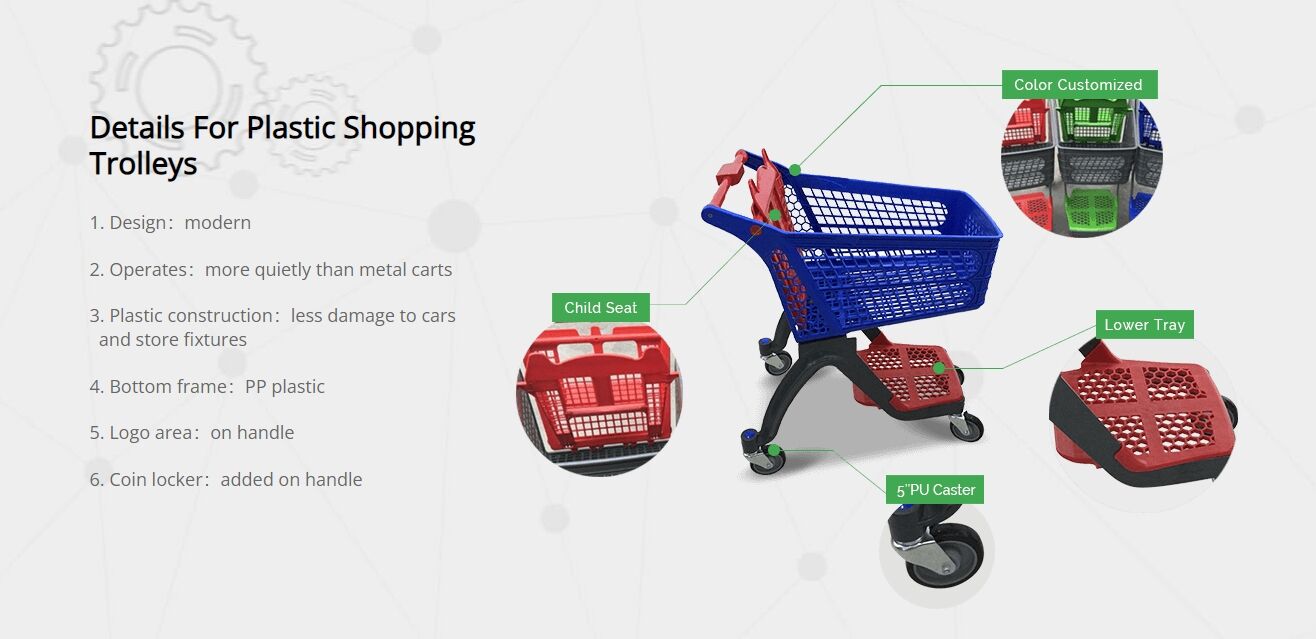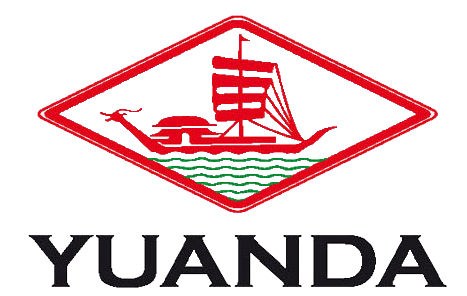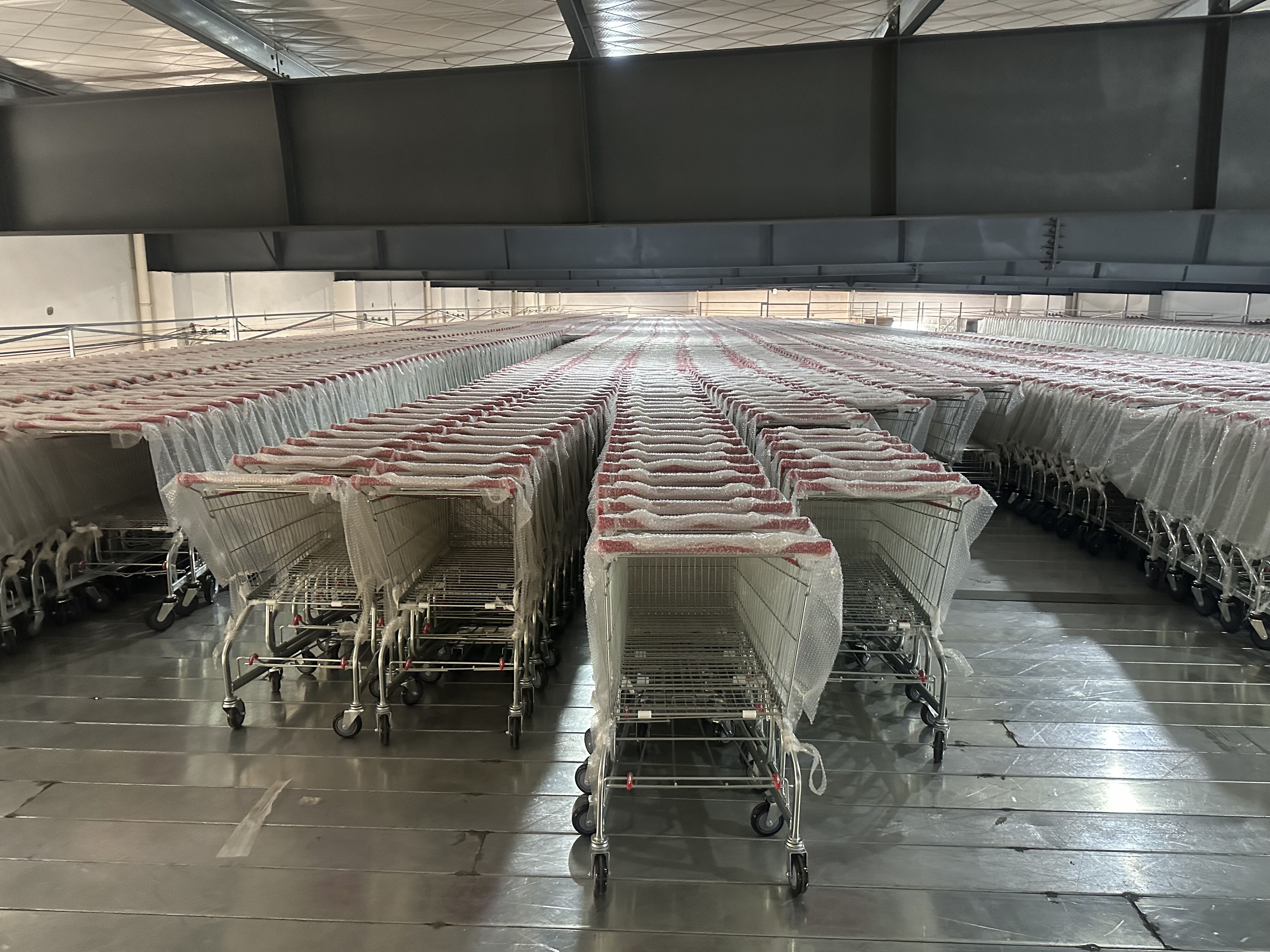Essential Guidelines for Selecting Retail Shopping Carts
The humble shopping trolley has become an indispensable tool in modern retail, fundamentally shaping how customers interact with stores and products. Selecting the right shopping trolley for your retail establishment goes far beyond a simple purchasing decision – it's an investment in customer experience, operational efficiency, and brand image. Whether you're outfitting a new store or upgrading existing equipment, understanding the key factors that make a shopping trolley effective can significantly impact your bottom line.
Today's retail environment demands shopping trolleys that not only serve their basic purpose but also enhance the shopping experience while standing up to constant use. From supermarkets to department stores, the right cart can influence customer behavior, purchase volumes, and overall shopping satisfaction. Let's explore the comprehensive aspects of choosing the perfect shopping trolley for your retail business.
Understanding Shopping Trolley Materials and Construction
Metal vs. Plastic Construction
When evaluating shopping trolley materials, the choice between metal and plastic construction represents a crucial decision point. Metal trolleys, typically made from chrome-plated or powder-coated steel, offer superior durability and can withstand heavy loads and frequent use. These traditional options provide excellent stability and longevity, though they may require more maintenance to prevent rust and maintain their appearance.
Plastic shopping trolleys have gained popularity for their lighter weight and modern aesthetic. High-grade polymers used in contemporary designs offer impressive durability while reducing noise levels and potential damage to store fixtures. They're also naturally rust-resistant and generally require less maintenance, though they may not match the load-bearing capacity of metal alternatives.
Durability and Maintenance Considerations
The longevity of your shopping trolley fleet directly impacts your return on investment. Quality construction should include reinforced corners, protected edges, and robust wheel assemblies. Look for models with replaceable parts, as this can significantly extend the service life of each unit and reduce long-term costs.
Consider the maintenance requirements of different materials and designs. While metal trolleys might need periodic rust prevention treatment, plastic versions may require UV protection to prevent degradation from sun exposure. The best shopping trolley choices often balance initial cost against ongoing maintenance needs and expected lifespan.
Size and Capacity Specifications
Optimal Cart Dimensions
The perfect shopping trolley size depends largely on your store's layout and typical customer purchase volumes. Standard-sized trolleys generally range from 80 to 100 liters, while larger versions can exceed 200 liters. Consider your aisle widths, storage space, and average transaction size when selecting dimensions.
Remember that bigger isn't always better – oversized shopping trolleys can intimidate customers making small purchases and may prove difficult to maneuver in tight spaces. Many successful retailers maintain a mix of sizes to accommodate different shopping missions and customer preferences.
Weight Capacity and Load Distribution
Weight capacity requirements vary by retail sector and target customer base. Grocery stores typically need higher weight capacities than fashion retailers. Look for shopping trolleys with clear weight ratings and tested load-bearing capabilities. The design should incorporate proper load distribution to prevent tipping and ensure stable movement even when fully loaded.
Consider how weight capacity affects usability. A well-designed shopping trolley distributes weight evenly across all wheels and maintains maneuverability even when approaching maximum capacity. This factor becomes especially important in stores with varied terrain or multiple levels.

Mobility and Maneuverability Features
Wheel Selection and Design
The choice of wheels can make or break a shopping trolley's performance. Modern casters should offer smooth rolling action while remaining durable enough for daily use. Look for wheels with quality bearings, non-marking materials, and appropriate size for your flooring type.
Advanced wheel designs often incorporate swivel locks for improved directional control and brake mechanisms for safety on slopes. Some shopping trolley models feature specialized wheels for escalator use or rough outdoor surfaces, which may be crucial depending on your store's layout.
Steering and Control Systems
Enhanced maneuverability features can significantly improve the shopping experience. Modern shopping trolleys often include advanced steering systems that reduce the turning radius and make navigation easier for customers. Some models offer fifth-wheel designs or central pivot points that provide better control in tight spaces.
Consider handle ergonomics and steering mechanism design carefully. These elements affect both customer comfort and cart control. The best systems feel natural and intuitive while requiring minimal effort to guide the trolley through the store.
Safety and Accessibility Features
Child Safety Elements
Modern shopping trolleys must incorporate robust safety features, especially for young passengers. Look for secure child seats with proper restraint systems and adequate support. The seating area should be easily cleanable and designed to prevent pinch points or entrapment hazards.
Some advanced models include entertainment features or designated safe zones for children's items. These additions can enhance the shopping experience for parents while maintaining essential safety standards.
Accessibility Compliance
Ensuring your shopping trolley selection meets accessibility requirements is both a legal necessity and customer service priority. Consider models with features that accommodate various physical abilities, such as adjustable handles or special grips for users with limited dexterity.
Many retailers now offer specialized shopping trolleys designed specifically for customers with mobility challenges. These adaptable options can significantly expand your store's accessibility and demonstrate commitment to inclusive customer service.
Frequently Asked Questions
What is the average lifespan of a retail shopping trolley?
A well-maintained shopping trolley typically lasts between 5-7 years in regular retail environments. However, this can vary significantly based on usage patterns, maintenance practices, and environmental conditions. Metal trolleys often have longer lifespans but may require more maintenance, while quality plastic models can offer comparable durability with less upkeep.
How many shopping trolleys should a store maintain?
The recommended number of shopping trolleys depends on your peak customer traffic and store size. A general rule is to maintain enough carts to serve 2-3% of your average daily customer count during peak hours. Factor in additional units to account for maintenance rotation and unexpected demand increases.
What are the most important maintenance practices for shopping trolleys?
Regular maintenance should include weekly inspections of wheels and moving parts, immediate repair of any damaged components, and thorough cleaning to prevent corrosion and maintain hygiene. Establish a rotation system for comprehensive maintenance checks, and keep spare parts on hand for common repair needs. Professional servicing may be required quarterly or bi-annually depending on usage levels.

